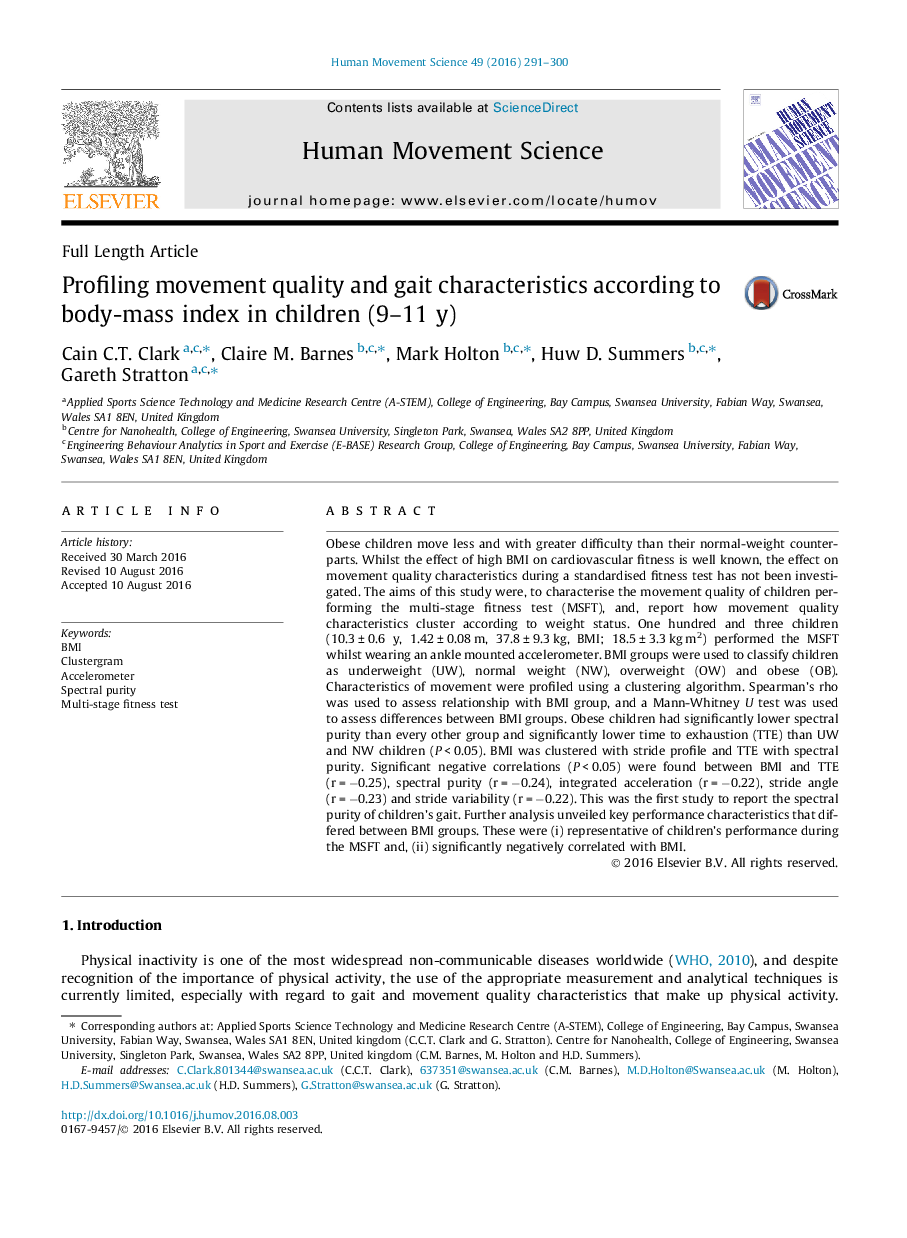| Article ID | Journal | Published Year | Pages | File Type |
|---|---|---|---|---|
| 7291328 | Human Movement Science | 2016 | 10 Pages |
Abstract
Obese children move less and with greater difficulty than their normal-weight counterparts. Whilst the effect of high BMI on cardiovascular fitness is well known, the effect on movement quality characteristics during a standardised fitness test has not been investigated. The aims of this study were, to characterise the movement quality of children performing the multi-stage fitness test (MSFT), and, report how movement quality characteristics cluster according to weight status. One hundred and three children (10.3 ± 0.6 y, 1.42 ± 0.08 m, 37.8 ± 9.3 kg, BMI; 18.5 ± 3.3 kg m2) performed the MSFT whilst wearing an ankle mounted accelerometer. BMI groups were used to classify children as underweight (UW), normal weight (NW), overweight (OW) and obese (OB). Characteristics of movement were profiled using a clustering algorithm. Spearman's rho was used to assess relationship with BMI group, and a Mann-Whitney U test was used to assess differences between BMI groups. Obese children had significantly lower spectral purity than every other group and significantly lower time to exhaustion (TTE) than UW and NW children (P < 0.05). BMI was clustered with stride profile and TTE with spectral purity. Significant negative correlations (P < 0.05) were found between BMI and TTE (r = â0.25), spectral purity (r = â0.24), integrated acceleration (r = â0.22), stride angle (r = â0.23) and stride variability (r = â0.22). This was the first study to report the spectral purity of children's gait. Further analysis unveiled key performance characteristics that differed between BMI groups. These were (i) representative of children's performance during the MSFT and, (ii) significantly negatively correlated with BMI.
Keywords
Related Topics
Life Sciences
Neuroscience
Cognitive Neuroscience
Authors
Cain C.T. Clark, Claire M. Barnes, Mark Holton, Huw D. Summers, Gareth Stratton,
